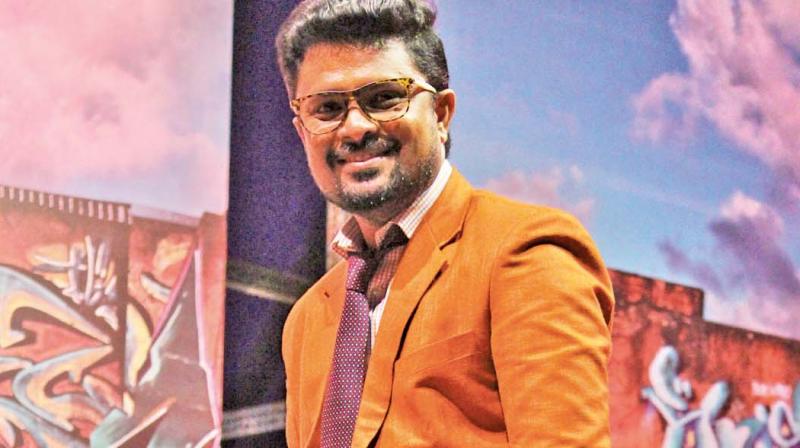Reimagining the art of dance!
Choreographer Sherif, who recently became the first Indian to join the Global Dance Committee, is coming up with a structured syllabus for dancers.

From star-ting out as a contestant in a reality show, to eventually evolving into a prominent choreographer in the film industry and setting up a dance school, Coimbatore-born Sherif’s growth has been both exceptional and inspiring.
Having worked with some of the biggest names in the film industry, the choreographer has now become the first Indian to be inducted in the Global Dance Committee.
Sherif opines that, in India, there’s no formal structure to learn or master the art of dance and hence, he’s coming up with a syllabus for the aspiring dancers.
In a freewheeling chat with us, Sherif speaks about the scenario for dancers in the country, his journey, his upcoming projects, his directorial aspirations and more.
Starting the conversation on how he sees his stratospheric growth, Sherif says, “I don’t see it as a growth actually — it’s been a very good travel. Dance has given so much to me and it’s now my turn to give back to the art form I love the most. I’ll work hard and will undertake several initiatives to help the dancing community in the country.”
Speaking about the scenario for dancers in Tamil Nadu, he says that he is happy that there are plenty of opportunities currently.
“When I started off, there weren’t as many opportunities for dancers… but the situation is very, very healthy now. There are a lot of avenues for us — like reality shows, celebrity and corporate events,” he states and claims, “I can safely say that a professional dancer can now earn an average of '50,000 per month. But the only concern I have is that there is no formal body, as such, for the dancers compared to other countries and we don’t have a formalised syllabus to learn the art.”
Sherif goes on to claim that this is the very reason why he has become a part of the Global Dance Committee so that he could collaborate with international dancers and draft a dance syllabus. “Dance, as an art form, should be taught in a more wholesome manner. And it will only be possible when we bring down experts from across the country to Chennai so that our dancers get better exposure. Also, with the more-structured syllabus, aspirants will have a clear idea of where to start and how to get trained in a more methodic way.”
As the conversation veers towards Kollywood, Sherif feels that the Tamil industry, in terms of dance choreography, is currently not at the highest level, when compared to other major industries in the country.
“If you take industries like Bollywood or Tollywood, Tamil industry still lags in terms of choreography. And that has had a very visible effect — nowadays, the number of songs in the films are so less and the average is decreasing gradually; it is not a good situation for dancers and the choreographers alike. We have to make sure that the songs and dances in Tamil films are attractive enough and make audience ask for more of it,” he muses.
Sherif also has ambitious plans of turning into a filmmaker in the future. “I want to direct a film, which will be about the journey of a dancer… I want to make this in Hollywood. Apart from that, I also have scripts for Tamil films. I’m now waiting for the right time to go ahead with one of these projects.”
On a concluding note, the ace choreographer gives a few tips for aspiring young dancers. “Money should never be your priority — once you work hard, you will start earning well automatically. And most importantly, you should have immense self-discipline and avoid unhealthy habits like drinking and smoking. Dance is physically demanding, so you should take care of your body,” Sherif says and takes leave.

